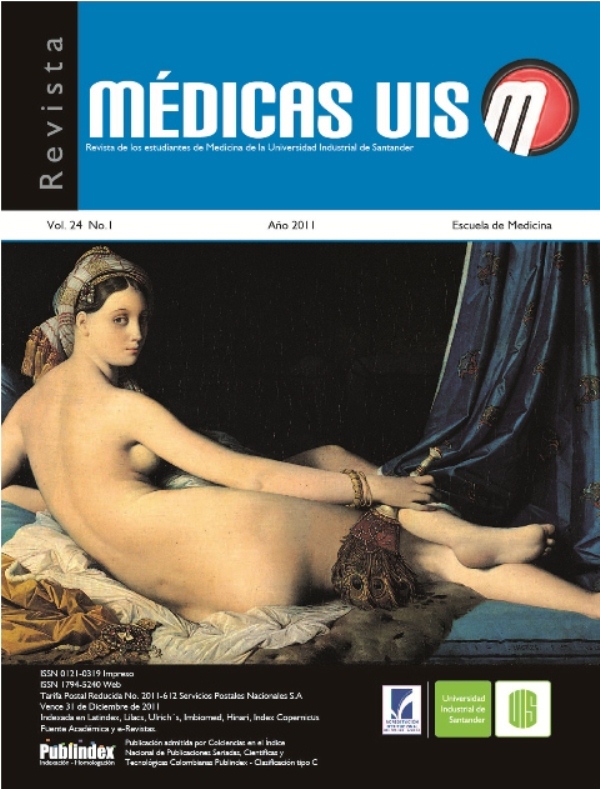Abstract
Drug-induced nephrotoxicityThis review includes a description of the different types of drug-induced nephrotoxicity (DIN) according to histopathologicclassification, generation mechanism, clinical presentation and drugs most frequently involved. For this review, a systematicsearch was conducted in the Index Medicus for articles published since 1999, which were selected according to their relevance.The DIN is a finding of major clinical importance due to their high frequency and potential severity, and the lack of preventivemeasures in many cases. The main renal impairments caused by drugs can be classified histopathologically according toaltered renal function. Thus, there is the acute tubular necrosis, interstitial nephritis, glomerular injury and vascular changesthat in turn include thrombotic microangiopathy, atherosclerosis and vasculitis. Finally, some commonly used drugs with highpotential for nephrotoxicity are reviewed, with emphasis on recommendations for clinical use to optimize the renal safety ofthese products.
Key words: Drug toxicity. Kidney. Acute renal injury. Chronic renal insufficiency. Medicamentous disease. Secondary effect.
References
2. Kleinknecht D, et al. Drug-associated acute renal failure: a prospective collaborative study of 81 biopsied patients. Adv Exp Med Biol. 1987; 212:125-8.
3. Kaloyandes GJ, et al. Antibiotic and immunosupressionrelated renal failure. Philadelphia: Lippincott, Williams & Wilkins; 2001 Meyrier A. Nephrotoxicity of iodine contrast media. Ann Radiol.1994;37:286-95.
4. Mc William LJ. Drug induced renal disease. Current Diagnostic Pathology. 2007;(13):25-31.
5. John R, Herzenberg AM. Renal toxicity of therapeutic drugs. J Clin Pathol. 2009;62(6):505-15.
6. Markowitz GS, Perazella MA. Drug-induced renal failure: a focus on tubulointerstitial disease. Clin Chim Acta. 2005;351(1-2):31-47.
7. Valsecia M, Malgor L. Utilización de fármacos en insuficiencia renal. Disponible desde Internet en: http://www.med.unne.edu.ar/catedras/farmacologia/temas_farma/volumen5/11_rinion.pdf. Último acceso: 16 de noviembre de 2010.
8. Li C, Lim SW, Sun BK, Yang CW. Chronic cyclosporine nephrotoxicity: new insights and preventive strategies. Yonsei Med J. 2004;45(6):1004-16.
9. Bakker R C, Scholten E M, De Fijter JW, Leendert C P. Chronic Cyclosporine Nephrotoxicity in Renal Transplantation. Transplant Rev. 2004;18(1):54-64.
10. Sawaya BP, Briggs JP, Schnermann J. Amphotericin B nephrotoxicity: the adverse consequences of altered membrane properties. J Am Soc Nephrol. 1995;6(2):154-64.
11. Bakker R C, Scholten E M, De Fijter JW, Leendert C P. Chronic Cyclosporine Nephrotoxicity in Renal Transplantation. Transplant Rev. 2004;18(1):54-64.
12. Michael G. Lithium and the Kidney. Drug Safety. 1999;20 (3):231-43.
13. Johnson G. Lithium-early development, toxicity, and renal function. Neuropsychopharmacology. 1998;19:200-05.
14. Schrader R. Contrast Material-Induced Renal Failure: An Overview. Journal of Interventional Cardiology. 2005;18(6).
15. Gault MH.evidence for the nephrotoxicity of analgesics. Can Med Assoc J. 1972;107(8):756-8.
16. Tabibian JH, Tabibian N, Kaufman DM. Late-onset celecoxib-induced combined hepato-nephrotoxicity. Br J Clin Pharmacol. 2008;66(1):150-1. Epub 2008 Mar 5.
17. ltrumper, lA. monasterolo and MM Elías. Probenecid protects against in vivo acetaminophen-induced nephrotoxicity in male wistar rats. J Pharmacol Exp Ther. 1998;284:606-10.
18. Kunio D, katsuhiko I. Diabetes and hypertriglyceridemia modify the mode of acetaminophen-induced hepatotoxicity and nephrotoxicity in rats and mice. JJ. Toxicol. Sci. 2009; 34(1):1-11.
19. Jiang M, Dong Z. Regulation and pathological role of p53 in cisplatin nephrotoxicity. J Pharmacol Exp Ther. 2008;327(2):300-7. Epub 2008 Aug 5.
20. Hanigan MH, Devarajan P.Cisplatin nephrotoxicity: molecular mechanisms. Cancer Ther. 2003;1:47-61.
21. Rougier F, Claude D, Maurin M, Sedoglavic A, Duche M, Corvaisier S, Jelliffe R, Maire P. Aminoglycoside Nephrotoxicity: modeling, simulation, and control. Antimicrobial Agents and Chemotherapy. 2003;47(3):1010-16.
22. Marie P, Mingeot L. y Tulkens P. Aminoglycosides: Nephrotoxicity. Antimicrobial Agents and Chemotherapy. 1999;43(5):1003-12.
23. Morales L., Arévalo M. y Pérez F. Mecanismos implicados en la nefrotoxicidad producida por aminoglucósidos. Instituto Reina Sofía de Investigación Nefrológica. Departamento de Fisiología y Farmacología. Universidad de Salamanca. NEFROLOGÍA. 2000;20(5).FármacoNecrosis tubular agudaNefritis intersticialEnfermedad glomerularVascularFuncionalAnfotericina BCiclosporinaLitioAINEsCisplatinoAminoglucósidosVancomicinaBetalactámicosAntirretroviralesTabla 2. Mecanismos de nefrotoxicidad por medicamentos de uso habitualSe presentan los mecanismos de nefrotoxicidad de acuerdo a la clasificación histopatológica. La correspondiente alteración para cada fármaco se indica con el sombreado.
